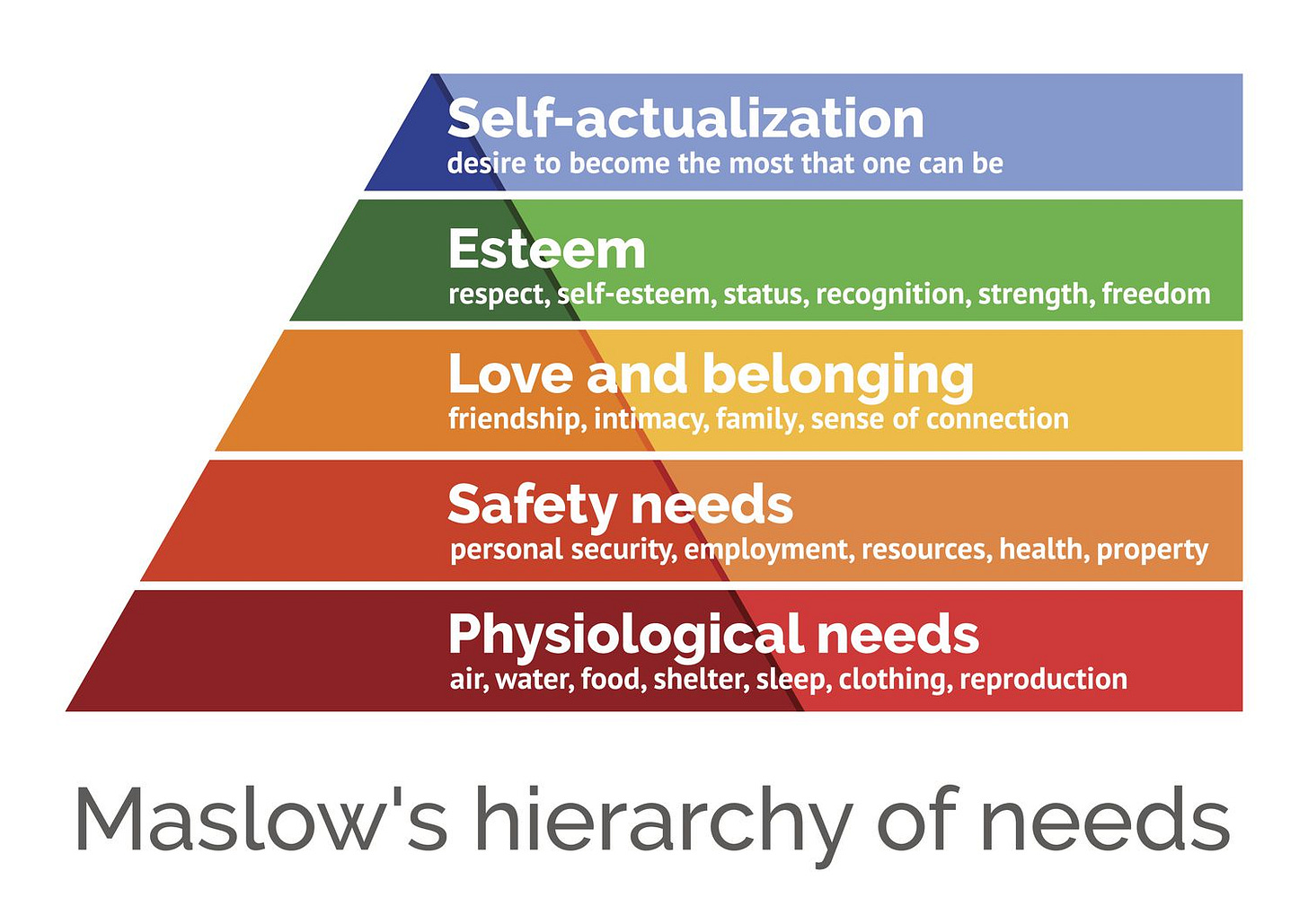Maslow's Hierarchy of Needs in Education
If you've not had anything to eat all weekend, not slept well and are wearing clothes that haven't been washed, would you perform well at your day job?
Maslow's hierarchy of needs is a psychological theory proposed by Abraham Maslow in 1943. The theory is based on the premise that human beings have different levels of needs, and these needs must be met in a specific order for an individual to achieve self-actualisation.
According to Maslow's hierarchy, the basic needs of individuals must be met before they can progress to higher-level needs. The hierarchy is often represented in the form of a pyramid (see above), with the most basic needs at the bottom, and the highest needs at the top.
The hierarchy is usually divided into five levels, which are:
Physiological needs: These are the most basic needs that an individual requires to survive, such as food, water, shelter, and sleep.
Safety needs: After the physiological needs are met, individuals require safety and security, including protection from harm, a sense of stability, and order.
Love and belonging needs: Once safety and security needs are met, individuals seek social relationships, including the need for love, affection, and a sense of belonging.
Esteem needs: After the basic social needs are met, individuals seek self-esteem, recognition, and respect from others.
Self-actualisation needs: This is the highest level of needs, where individuals seek personal growth, creativity, and self-fulfilment.
When it comes to children in England with Social, Emotional and Mental Health (SEMH) needs, Maslow's hierarchy of needs is crucial in understanding how learning-ready they are. For example, children with SEMH needs often do not have their physiological needs met, such as getting enough food or sleep. Therefore, schools and other support systems must ensure that these basic needs are met before attempting to engage them in anything academic. Let’s face it, if you hadn’t slept for days, eaten enough and were wearing clothes that hadn’t been washed in days, I doubt you'd be able to perform well in your day job!
Children with SEMH needs often also struggle to form social relationships. This is the third level in Maslow's hierarchy. Schools and support systems should focus on providing these children with a sense of belonging and connection to others to address their emotional needs. I’ll write more blogs on how to increase positive social interactions between Children and Young People (CYP) with SEMH needs in the future!
Moreover, the need for self-esteem is also essential for children with SEMH needs. Children with SEMH needs may struggle with confidence and self-worth, making it crucial to provide them with positive feedback and recognition for their achievements. The phrase catch them being good is one that I always use! It’s so important to praise CYP with SEMH needs for doing something good. You might be the only adult that praises them that day.
In summary then, if you haven’t had your physiological and safety needs met, it’s extremely difficult to focus on anything… let alone sit in a classroom for 50 to 60-minute sessions and complete all the work placed in front of you!



